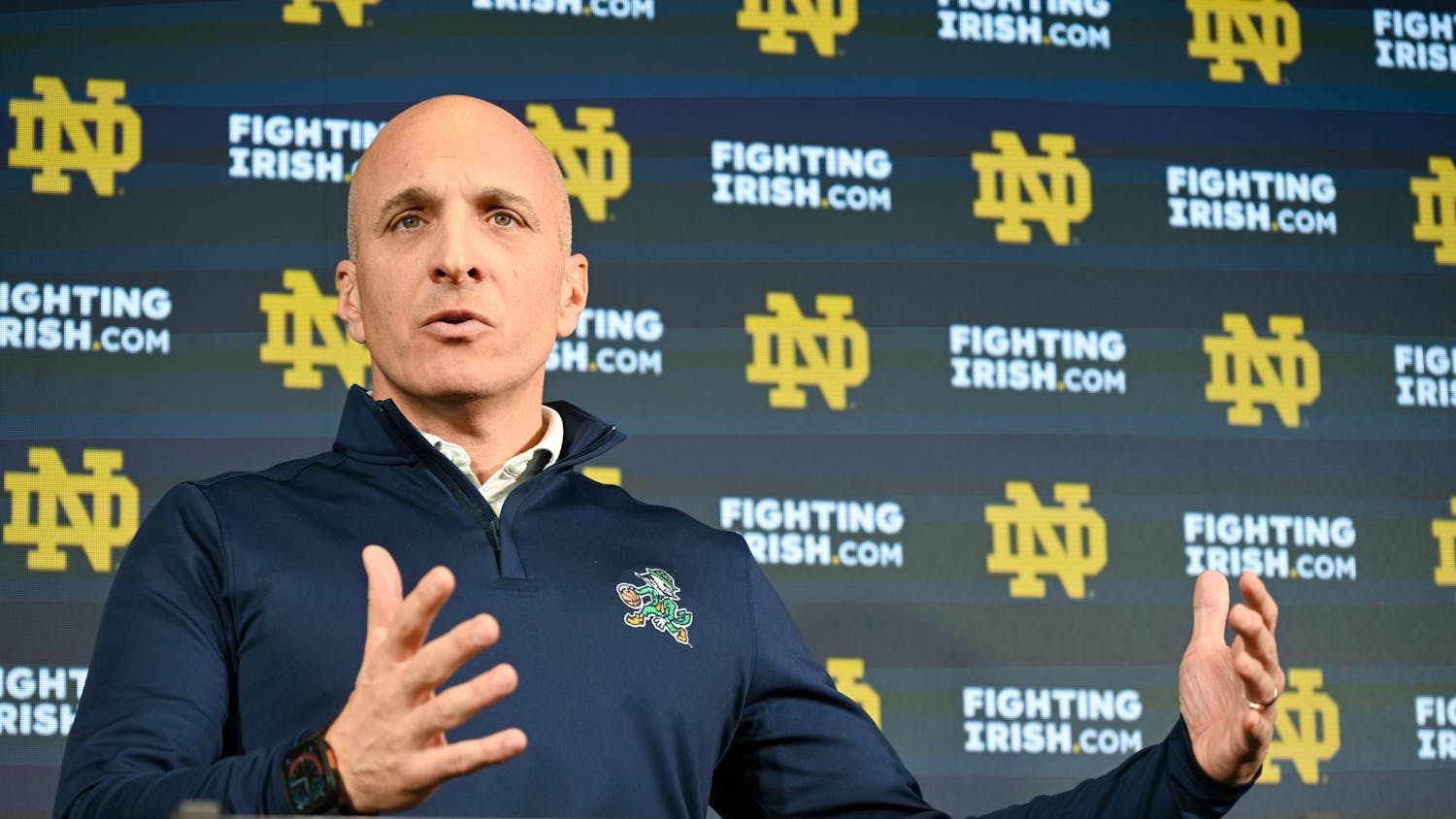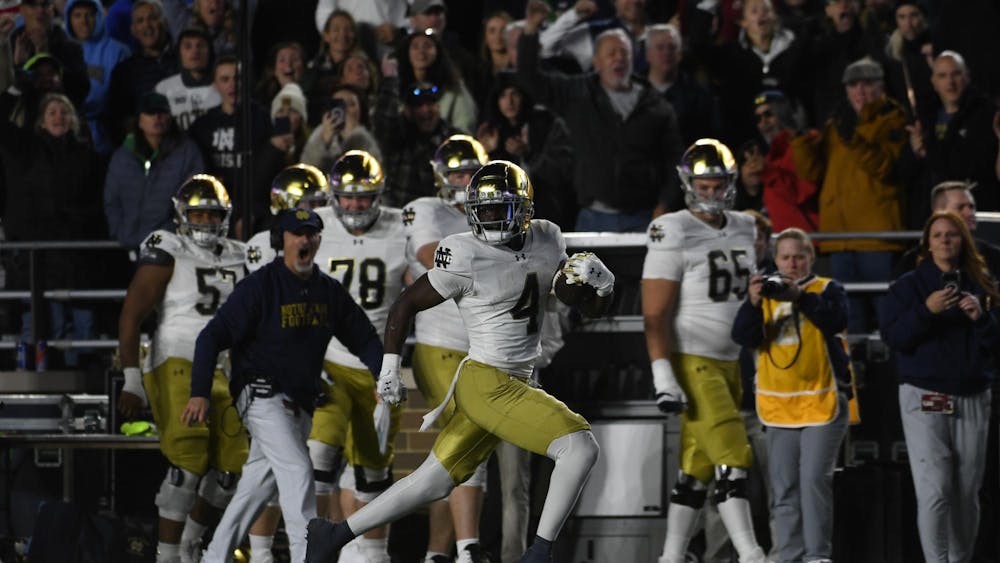The school once known as “Annapolis West” will take on the original Annapolis this weekend.
During World War II, Notre Dame was in danger of folding. Most of the all-male student population had gone off to war, and Notre Dame’s endowment was down to the cost of gold atop its iconic Dome. Notre Dame came close to closing down in the early 1940s until the Navy came to the rescue. When Notre Dame was sinking, the United States Navy kept the Irish afloat. The Navy rented Notre Dame’s facilities, commissioned scientific research and saved the golden school.
In January 1942, the Navy set up headquarters in the shadow of Notre Dame Stadium, where the Hesburgh Library now stands tall. The naval officers stayed in a number of Notre Dame’s dorms. A one-month officers training program began Navy’s presence on campus, which soon resulted in Notre Dame being named a Reserve Midshipmen School and finally included officers taking courses taught by Notre Dame faculty. Notre Dame also received a Naval ROTC program, which continues to award more Naval ROTC scholarships than any university in the country. By 1943, the student population was consistently steady at 3,500 to 4,000 students. All-in-all Notre Dame churned out around 25,000 reserve Naval officers and ensigns during Word War II.
Even before the war, Notre Dame owed part of its success on the football field to the Naval Academy. When the Big Ten members snubbed Notre Dame in the 1920s, the service academies were the ones that stepped in to play the Irish on a regular basis. The Irish and Naval Academy haven’t missed a game since 1927, making the series the longest continuous game between two teams in college football.
An annual football game is not a fitting repayment for all that the Navy has done for Notre Dame, but it is how Notre Dame’s community honors its unpayable debt.
When Notre Dame moved to the ACC in 2013, questions about axing the Navy game from the Irish schedule were raised because one or two “rivalries” had to go and Navy, according to some, was the least qualified team with which to continue a rivalry.
Yes, the game may be lopsided, as the Irish hold a 74-12-1 advantage over Navy, but there is more to the game than the results. When people argue that Notre Dame should drop Navy from its schedule to make room for better, more rewarding opponents, they forget or don’t know the history between the two schools. It is not a rivalry because the Irish hate Navy’s Billy goat or because the Midshipmen hate wee magical creatures; it is a rivalry that stems from a long history of mutual respect between the two schools. This respect can be seen at the end of the game, when both teams stand present during the other school’s alma mater.
It is a game scheduled every year and one of the only must-play games for Notre Dame. When ESPN polled coaches from the power-five conferences, including Brian Kelly, about only scheduling games against power-five opponents, Kelly said if it meant giving up the annual Navy game, Notre Dame was not in favor of the move, and it would be a “deal-breaker.”
It is surprising there is a stigma toward playing the Naval Academy when almost every other power-five school plays an FCS or low-level FBS team at least once during the year. The Naval Academy is an FBS team and is not an easy team to prepare for or to play. Look at 2007, 2009 and 2010.
As Notre Dame and Navy are so closely tied, not by geographic location or by record, but by mutual respect, it is easy to see why the teams play every year. And regardless of outcome, Notre Dame will never write Navy off.









